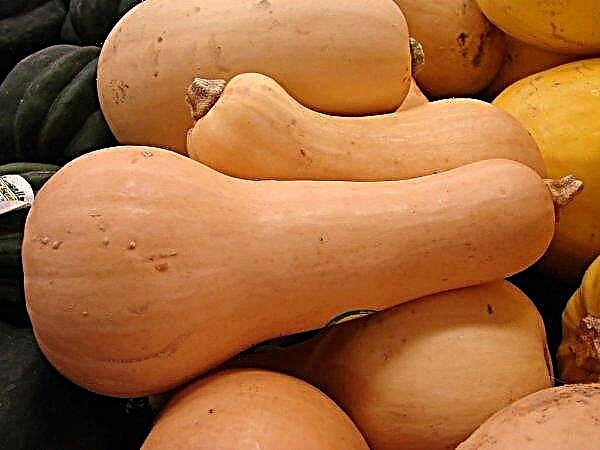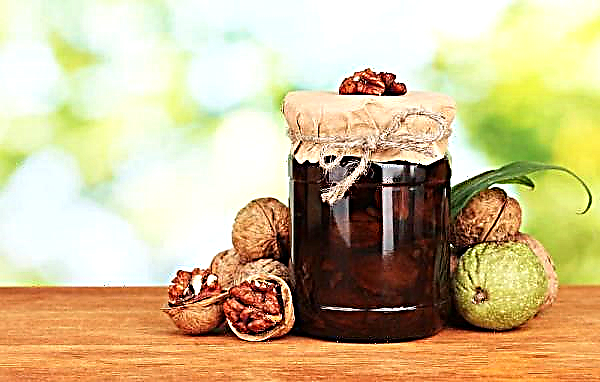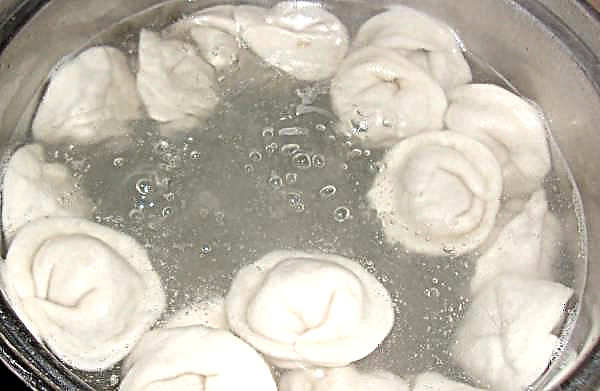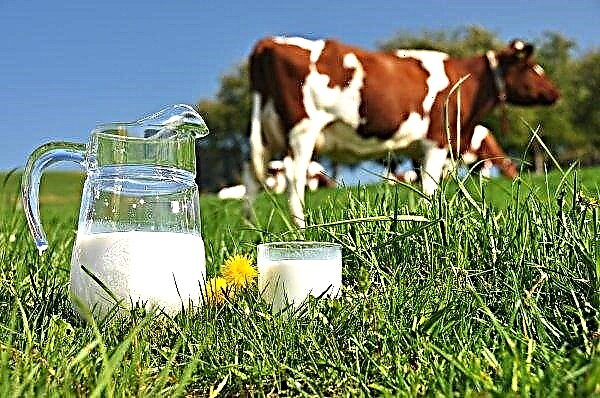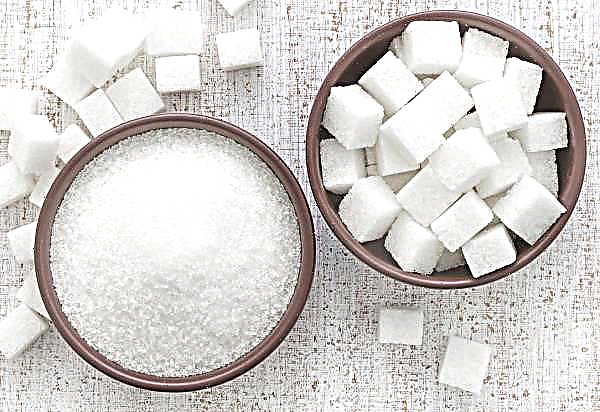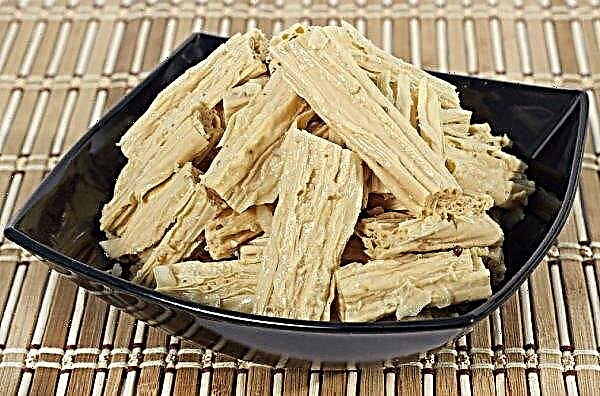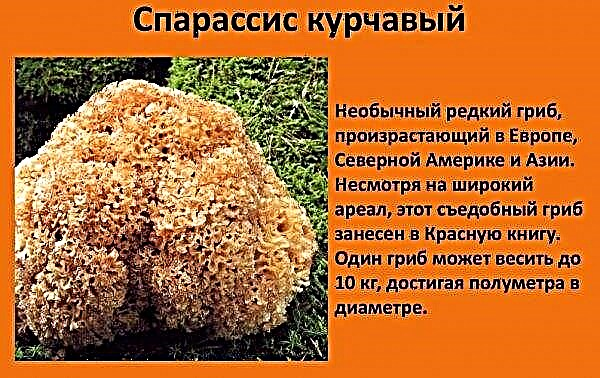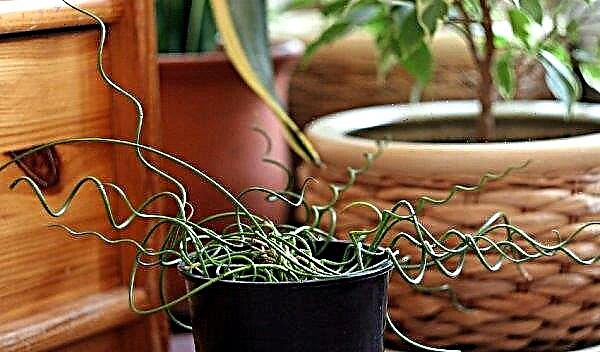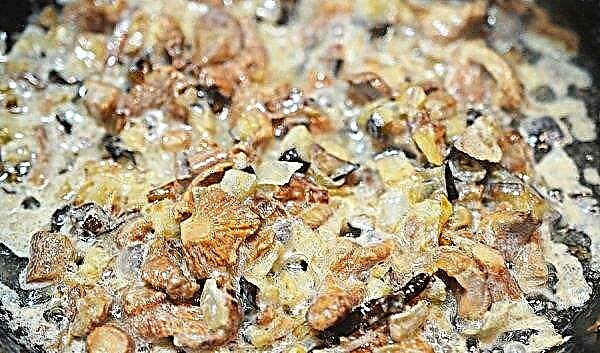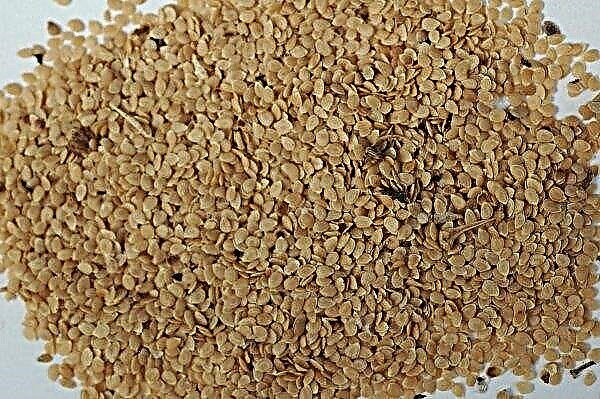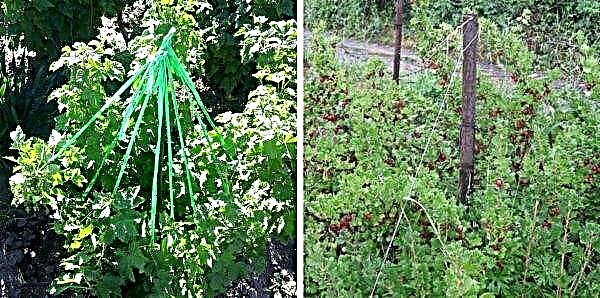Anthuriums on our territory were imported from the countries of South and Central America. Their exotic appearance and ability to bloom almost all year round have won many admirers. We will consider how to properly contain anthuriums in indoor conditions, so that they please us with their flowering, what mistakes should be avoided, we will find out useful recommendations from experienced gardeners.
Basic rules for the cultivation and care of anthurium
Of the many species of anthuriums, indoor anthurium Andre and anthurium Scherzer are grown in indoor conditions and greenhouses, and Khristalnyy and Otlichnyy are used as decorative foliage. The first two species are the most popular among flower growers, as they bloom interestingly.
Did you know? There is a legend about the red Anthurium that the once brutal leader fell in love with a young girl from another tribe and abducted her, deciding to marry against her will. But the beauty did not want to put up with this and rushed to the fire. The gods did not allow the girl to die, turning her into a beautiful flower, and the whole tribe, together with the leader, turned into tropical thickets.
Now breeders have bred a lot of their forms and varieties. Their inflorescences-cobs are wrapped with a spectacular veil of various colors (red, burgundy, pink, white and others). There are even varieties of almost black color. Decorative and deciduous species have large leaves with light veins, giving the plant an elegant variegation. These plants of the tropics and subtropics prefer greenhouse conditions, and it is best to choose more unpretentious and compact hybrids in the house. The most popular varieties are based on the Anthurium Andre. They have leaves and leathery flower bedspreads that are heart-shaped.
These plants of the tropics and subtropics prefer greenhouse conditions, and it is best to choose more unpretentious and compact hybrids in the house. The most popular varieties are based on the Anthurium Andre. They have leaves and leathery flower bedspreads that are heart-shaped.
When growing anthurium in room conditions, the following rules should be observed:
- Maintain optimum temperature conditions. During the growing season and flowering, it should be within +20 ... + 28 ° С, and during the winter dormancy period - +16 ... + 18 ° С.
- Carry out regular spraying or other procedures in order to maintain the necessary humidity, which should be in the range of 70–90%. In summer, spraying is done 2 times a day, and in the cold - 1 time per day. In this case, it is necessary to use a spray with fine spray so that water does not collect on the covers of the flowers and does not cause the appearance of spots.
- Regularly irrigate with soft water at room temperature. In summer - 2-3 times a week, in winter - only once.
- Provide regular feeding 2 times a month during the growing season and monthly during the winter dormancy.
- Protect from direct sunlight.but provide sufficient diffused light.
- In winter, the plant must be illuminated, caring as usual, or make a rest period with a decrease in temperature to +15 ... + 16 ° C and a decrease in watering, top dressing.
- Carry out a timely transplant of a flower into a suitable soil. Usually they take soil mixtures based on peat with the addition of sphagnum, humus, cones, charcoal, perlite, coconut. You can buy ready-made soil mix. The main thing is that it is slightly acidic and loose.
- Be sure to drain.
- Plants are planted in a shallow and wide pot, which is 2-3 cm larger than existing roots.
Why Anthurium does not bloom: main reasons
The capricious anthurium in violation of the conditions of detention is in no hurry to please with its colors, which causes grief for their owners. Consider the main ones.
Microclimate
Summer heat or a lack of room heating in the cold period negatively affects the ability to bloom and the plant as a whole. When the temperature drops below +18 ° C or if it rises above +32 ° C, the flower buds stop laying and the anthurium does not grow.
At the same time, for more frequent and lush flowering, the anthurium should create a dormant period in winter, dropping the thermometer to the level of +16 ... + 18 ° С. Lowering the temperature below +10 ° C causes the death of the plant, and an increase above +32 ° C causes burns.
The same thing happens with high air dryness in the summer heat or heating season. The plant is very demanding on indoor air humidity, and if it is not regularly sprayed and the optimum humidity level is not maintained, then flowering is useless. Spraying should be carried out with boiled water at room temperature.
Incorrect watering and fertilizing
Do not allow the soil to dry out or excessively moist soil when the ground is wet all the time. Watering should be carried out as the topsoil dries. Water should be avoided on the leaves. In summer, watering is carried out more often, and in winter less often.
Water should be used well-kept or filtered at room temperature.
Such an actively flowering plant during the growing season will need feeding (2 times a month), otherwise it will not be able to bloom, its leaves are chopped, growth will stop. During dormancy, they must be reduced or stopped.
You should choose the right fertilizer. If the plant is often fertilized with nitrogen fertilizers, then flowering will stop. Anthurium also does not like fertilizers with calcium. Suitable liquid fertilizers for orchids or other top dressing that increase the acidity of the soil.
Inappropriate pot
It is important to choose the optimal tank size. If the roots of the flower protrude on the surface, then the pot needs to be changed to a little more spacious. When the roots of Anthurium master the entire space of the container, flower buds cease to be laid. At the same time, a container that is too spacious will make the plant throw all its strength into the development of soil accessible to the roots to the detriment of flowering.
At the same time, a container that is too spacious will make the plant throw all its strength into the development of soil accessible to the roots to the detriment of flowering.
Diseases and pests
Anthurium, which was weakened by inappropriate conditions of detention, is prone to various lesions.
Pests prefer to bypass this plant, but sometimes it can be found on it the following insects sucking plant juice:
- Aphid. A small green insect hiding at the bottom of a leaf. Aphid activity causes drying and twisting of leaves. For treatment, they use "Actellik", "Karate", "Decis", and from folk remedies you can use the infusion of garlic.
- Shields. They look like brownish small tubercles. To get rid, use drugs such as Confidor, Bankol.
- Spider mite. Often it affects plants that are in a warm room with dry air. Gives its appearance with thin fragments of a web and yellowish dots on the leaves. The chemical preparations “Actellik”, “Oberon”, “Akarin” are used against it.
- Thrips. Looks like little flies. As a result of their activity, the foliage of the affected flower acquires a yellow-white color. For destruction are used "Karate", "Actellicus".
Important! Only purchased anthurium is recommended to be inspected with a magnifying glass for damage by insect pests or diseases and quarantined. When transplanting, you should always use sterilized soil and containers - this will save the plant from many diseases.
Too much dampness due to excessive and frequent watering can cause root decay and fungal diseases:
- Smallpox. It can provoke a low air temperature with high humidity, spraying with cold water. Various bulges appear on the leaves.
- Of enations. It occurs against the background of temperature changes. The leaves are deformed and covered with growths.
- Rot. The causative agent of rot are fungi, which actively develop against the background of high humidity. First, white spots appear on the shoots. And then they get dark. Root rot causes the plant to dry out. In all cases, the affected parts of the plant are cut off, and the plant is treated with fungicides (Fitosporin, copper sulfate). If the rot has hit the roots, then it is recommended to transplant the flower into the disinfected soil, removing the affected roots.
- Septoria. It is characterized by the appearance of brown spots. This is a fungal disease and is treated in the same way as rot.
- Rust. It is also a fungal disease that causes the appearance of rust on the leaves with their subsequent withering. The same drugs are used as with rot. Soil is also cultivated.
- Fusarium. The most dangerous fungal disease, causing massive wilting of leaves and pinkish plaque on the basal neck. If no measures are taken at the initial stage (treatment with Fundazol), then the flower will die.
- Powdery mildew. It manifests itself by the appearance of white plaque and curl of foliage. Antifungal agents are used (Fitosporin-M).

Other reasons
Factors due to which the plant ceased to bloom may be the following:
- lack of light;
- direct sunlight, burning and weakening the plant;
- unsuitable soil - too dense, too acidic, not nutritious;
- damage or cutting of roots during transplantation;
- weakening due to frequent shifts from place to place;
- draft, being under a stream of the conditioner;
- a newly purchased flower may not bloom due to the use of stimulants by the manufacturer or seller;
- in an old plant, the flowers are smaller at first, and then generally cease to appear.
Did you know? Astrology believes that anthurium is suitable for people born under the constellation Sagittarius.
What to do to bloom anthurium at home
Sometimes anthurium releases only leaves. Especially often this happens with recently purchased plants. The thing is that often, growing plants for sale, sellers use flowering stimulants. After such a load, the flower needs to rest, and its new owners should be patient.
A new plant should always be inspected for various lesions and pests. When it fades, it is recommended to transplant it into a suitable soil (for orchids or flowering plants) and a shallow pot a little larger than the previous one.
After transplantation, it is recommended to make a rest period of 2-3 winter months, so that the anthurium rests and gain strength for flowering. Then, from spring to autumn, fertilizers are applied to make it bloom, since the plant needs a lot of nutrients to lay peduncles.
Phosphorus is especially important during this period. Daylight hours during the growing season should be at least 12 hours. Some hybrid forms can bloom all year, they can not do a rest period, but feed the same as during the growing season, and maintain optimal temperature and lighting with the help of heating devices and phytolamps. At the same time, do not forget about maintaining optimal conditions, feeding and timely plant transplantation.
Some hybrid forms can bloom all year, they can not do a rest period, but feed the same as during the growing season, and maintain optimal temperature and lighting with the help of heating devices and phytolamps. At the same time, do not forget about maintaining optimal conditions, feeding and timely plant transplantation.
Important! All parts of the plant are poisonous. It should be inaccessible to children and animals, and transplantation is recommended to be carried out with rubber gloves, since the juice of anthurium causes skin irritation.
Useful tips from experienced gardeners
When growing anthurium, experienced gardeners give the following useful tips:
- Ash, chalk and lime should not be added to the nutrient soil for planting this indoor flower. The application of nitrogen fertilizers causes a strong growth of foliage, but the plant stops flowering.
- Old anthuriums need to be updated with an apical shoot. In a transplanted plant, lateral shoots are removed during transplantation, which can be used to propagate the flower.
- Be sure to cut off faded buds in a timely manner. A softener should be mixed in for watering and spraying, as this indoor flower prefers an acidic environment.
- To maintain the necessary humidity, if it is not possible to spray often or the air is too dry, you can put a flower pot in a tray with wet pebbles. Pebbles evaporated from stones will maintain the necessary moisture level.
- Inspect the flower for pests and diseases to provide timely assistance.
- If no measures help, then you can try to artificially stimulate flowering. For this purpose, in early spring, a flower is irrigated with soft tepid water in a volume of 50 ml. Then after 7 days, water is poured into the pan of the pot at a temperature of about +60 ° C. The pot must have a thick layer of drainage so that the roots are not burnt. After another 7 days, the procedure is repeated. This effect contributes to a more rapid awakening of the plant to an active life stage, and it will certainly give a plentiful color.

Common mistakes when growing anthurium
Many fans of Anthurium make the following mistakes in its content:
- do not take into account the increased dryness of the air during the heating period or in the summer heat;
- no drainage;
- Do not obscure from direct sunlight, especially in the summer, when it is active;
- grown in dark corridors and other poorly lit places;
- they forget to take away plants on time from the balcony during the onset of cold weather and do not monitor the temperature drop on the windowsill;
- they keep the plant on the south window, where it is threatened with sunburn and overheating in the summer;
- when airing, do not remove the flower from the draft;
- placed under a stream of air conditioning;
- insufficient lighting in winter;
- the use of inappropriate soil (for example, for cacti), and sometimes they are simply planted in the ground from the garden;
- on time do not transplant and do not update overgrown specimens;
- watered or sprayed with cold tap water;
- miss the rest period (although not all anthuriums need it);
- plants are poured all the time (the soil is too wet) or watering is missed (the soil has dried).
 Anthuriums can delight with their exquisite flowering almost the whole year, if the necessary conditions are provided.
Anthuriums can delight with their exquisite flowering almost the whole year, if the necessary conditions are provided.Did you know? Spectacular and vibrant Anthurium flowers are often used in floristic compositions. After cutting, they can stand for a long time in a vase (up to 3-5 weeks). On sale you can find these flowers from Holland, which after cutting are placed in test tubes with nutrient liquid and stored at a temperature +8 ° C.
Most often, flowering is absent with a lack of humidity, poor lighting, non-compliance with the temperature regime, due to improper container size and lack of useful elements.

